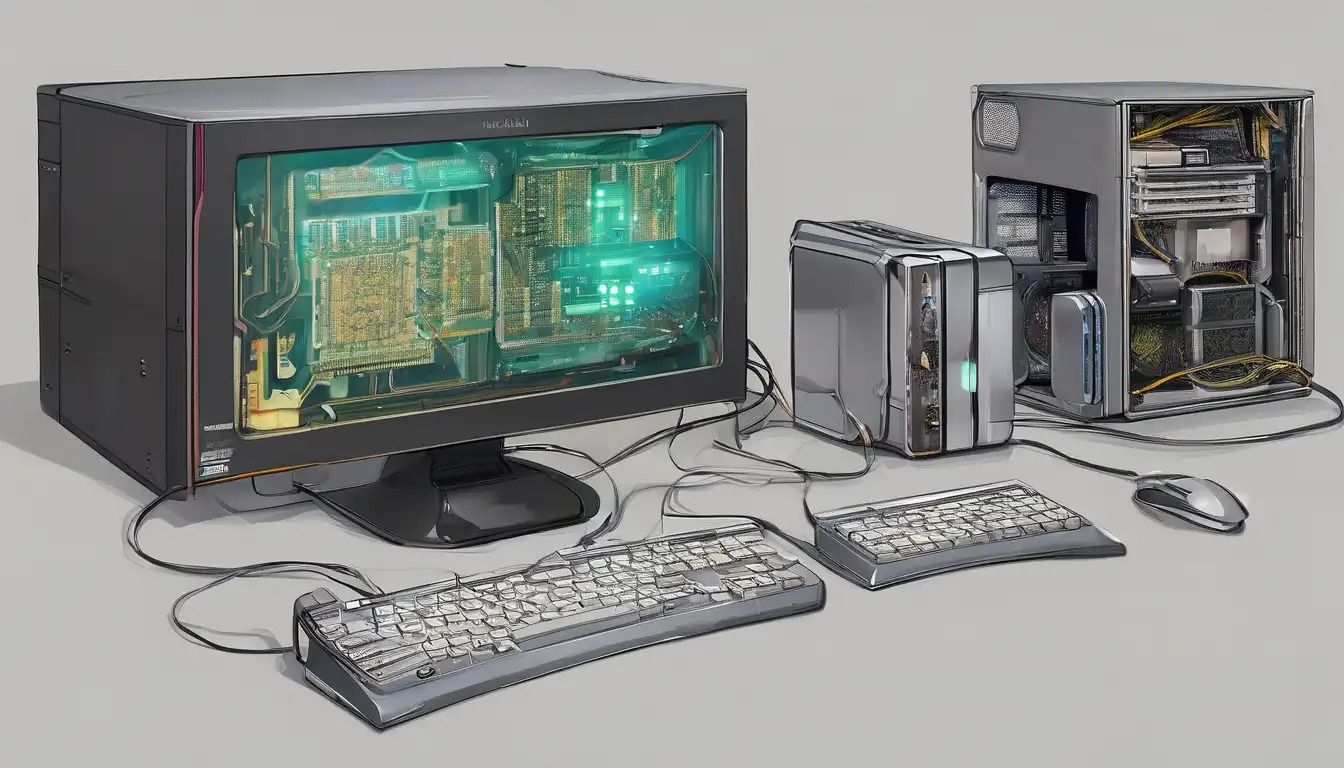Revolutionary Advances in Computer Hardware Technology
The world of computer hardware is experiencing unprecedented innovation, with breakthroughs occurring at an accelerated pace. From quantum computing to AI-optimized processors, the landscape of computing technology is transforming before our eyes. These advancements are not just incremental improvements but fundamental shifts that promise to redefine how we interact with technology in our daily lives and professional environments.
Next-Generation Processors: Beyond Moore's Law
The semiconductor industry continues to push boundaries with processors that defy traditional limitations. Companies like Intel, AMD, and Apple are introducing chips with revolutionary architectures that deliver unprecedented performance while maintaining energy efficiency. The latest processors feature advanced node technologies, with some manufacturers achieving 3nm and even 2nm processes that enable billions of transistors on a single chip.
What makes these new processors truly innovative is their heterogeneous architecture approach. Instead of relying solely on increasing clock speeds, manufacturers are integrating specialized cores for specific tasks. This includes dedicated AI accelerators, high-performance cores for demanding applications, and efficiency cores for background tasks. The result is smarter power management and significantly improved performance across diverse workloads.
Graphics Processing Units: The AI Revolution
Modern GPUs have evolved far beyond their original purpose of rendering graphics. Today's graphics cards are sophisticated parallel processing units capable of handling complex computational tasks. NVIDIA's latest RTX 40 series and AMD's RDNA 3 architecture demonstrate how GPU technology has become essential for artificial intelligence, machine learning, and scientific computing.
The integration of AI-specific hardware within GPUs represents one of the most significant innovations. Tensor cores and AI accelerators enable real-time ray tracing, advanced upscaling technologies like DLSS and FSR, and accelerated AI inference. These features not only enhance gaming experiences but also empower researchers and developers to tackle complex problems that were previously computationally prohibitive.
Memory Technology: Speed and Capacity Breakthroughs
Memory technology has seen remarkable advancements with DDR5 RAM becoming mainstream and DDR6 already in development. These new memory standards offer significantly higher bandwidth and lower power consumption compared to their predecessors. The latest DDR5 modules can achieve speeds exceeding 8000 MT/s, providing substantial performance gains for memory-intensive applications.
Storage technology has undergone an even more dramatic transformation. PCIe 5.0 SSDs are now available, offering read and write speeds that surpass 10,000 MB/s. This represents a quantum leap in storage performance, effectively eliminating loading times for most applications. The development of QLC and PLC NAND flash technology continues to drive down costs while increasing storage densities, making terabyte-scale SSDs increasingly affordable.
Quantum Computing Hardware: The Future is Now
While still in its relative infancy, quantum computing hardware has made significant strides. Companies like IBM, Google, and D-Wave are developing quantum processors with increasing qubit counts and improved coherence times. The latest quantum computers feature error correction mechanisms and more stable qubit designs, bringing practical quantum computing closer to reality.
Superconducting qubits, trapped ions, and topological qubits represent different approaches to building quantum computers, each with unique advantages. The race to achieve quantum supremacy continues, with recent demonstrations showing quantum computers solving problems that would take classical computers thousands of years. As quantum hardware matures, we can expect breakthroughs in drug discovery, materials science, and cryptography.
Cooling Solutions: Keeping Up with Thermal Demands
As processors become more powerful, managing heat dissipation has become increasingly challenging. Innovative cooling solutions have emerged to address this critical issue. Liquid cooling systems have evolved from exotic enthusiast options to mainstream solutions, with all-in-one coolers offering excellent thermal performance at accessible price points.
Phase-change cooling and immersion cooling represent the cutting edge of thermal management technology. These advanced cooling methods allow processors to operate at higher frequencies for longer periods without thermal throttling. Some data centers are even experimenting with liquid immersion cooling for entire server racks, significantly improving energy efficiency and reducing cooling costs.
Peripheral Innovations: Enhancing User Experience
Computer hardware innovation extends beyond the core components to include peripherals that enhance the overall computing experience. High-refresh-rate monitors with OLED and Mini-LED technology provide stunning visual quality, while mechanical keyboards with optical switches offer faster response times and greater durability.
Wireless technology has also seen substantial improvements, with Wi-Fi 6E and Bluetooth 5.3 providing faster, more reliable connections. Gaming peripherals now feature advanced sensors and AI-enhanced tracking capabilities, while professional-grade monitors offer color accuracy that meets industry standards for content creation and medical imaging.
Sustainable Hardware: Eco-Friendly Innovation
The hardware industry is increasingly focusing on sustainability, with manufacturers developing energy-efficient components and implementing environmentally friendly production processes. New power supplies achieve 80 Plus Titanium efficiency ratings, converting over 94% of AC power to DC with minimal waste.
Modular designs and repairability are becoming key considerations in hardware development. Companies are designing components with longer lifespans and better upgrade paths, reducing electronic waste. The use of recycled materials in manufacturing and improved packaging solutions further demonstrates the industry's commitment to environmental responsibility.
The Road Ahead: Emerging Technologies
Looking forward, several emerging technologies promise to reshape computer hardware even further. Neuromorphic computing, which mimics the human brain's neural structure, offers potential breakthroughs in energy efficiency and processing capabilities. Optical computing, using light instead of electricity, could revolutionize data transmission speeds and processing power.
3D chip stacking and chiplet architectures represent another frontier in hardware innovation. By stacking multiple layers of silicon or combining specialized chiplets, manufacturers can create more powerful and efficient processors without relying solely on process node shrinkage. These approaches will likely define the next generation of computing hardware.
The pace of innovation in computer hardware shows no signs of slowing. As artificial intelligence, quantum computing, and other advanced technologies continue to evolve, the hardware that powers them must keep pace. The innovations we see today are just the beginning of a computing revolution that will transform how we work, play, and interact with technology for decades to come.
